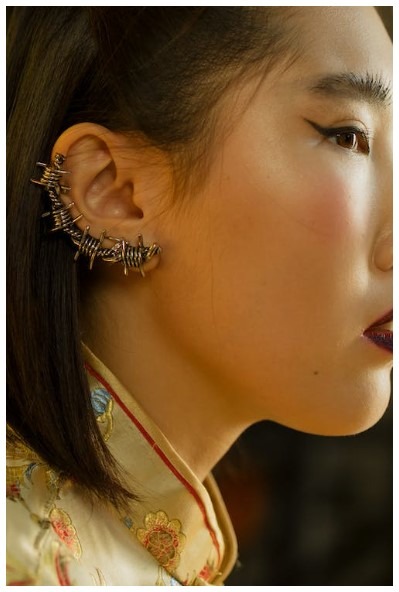Japanese arts and crafts became known outside of the country only one and a half hundred years ago. More specifically, it happened in 1865 when the state government underwent drastic changes. After the so-called “Japan opening to the world”, foreign officials, businessmen, diplomats, missionaries, and travelers from all over the world flocked to the small mysterious country to explore its offering. In the second half of the 19th century, previously inaccessible and even seemingly dangerous, Japan turned into the most fashionable and appealing country for any curious European.
Discovery of Japanese Art
After the ‘discovery’ of Japan, it was only a matter of time before the rest of the world and the Country of the Rising Sun establish a cultural exchange. Japanese traditional art became a matter of special interest across the globe and in Europe specifically. We cannot fail to mention the impact it had on visual arts – for impressionists, Japanese culture immediately turned into a source of inspiration. Before long, Japanese artistic techniques became a prominent trend in impressionists’ pictorial works.
By the end of the 19th century, passion for Japanese arts and crafts took over Europe. From porcelain, fabrics, costume elements, and screens to jewelry with traditional white and black pearls, wondrous Japanese trinkets became a wet dream for ardent fashionistas of that time. It came as no surprise that Japanese art greatly influenced the Art Nouveau style dominating in the late 19th century. The best Parisian jewelers Rene Lalique and the Fouquet brothers never hid their sincere admiration for traditional Japanese crafts. They even confessed that they had borrowed a few interesting techniques from the Japanese.
Things We Love Japanese Jewelry For
It is its unique features and highlights that make Japanese jewelry so appealing outside of its home country. Firstly, Japanese jewelry is strewn with pearls, both baroque (irregular in shape) and perfectly round. The latter are grown by the great Mikimoto house, a centuries-old supplier of the imperial court.
Secondly, Japanese jewelry is known for a scares number or decorative elements. Externally and internally alike, a piece of Japanese jewelry is incredibly monolithic. The reason behind that is Japanese culture valuing the creativity of nature and deeming it unnecessary to add much to. A striking example of such an attitude to nature and its gifts is Japanese cuisine, which, unlike Chinese or Korean cuisine, strives for naturalness and freshness.
Thirdly, Japanese jewelry art is stupendously meditative in its emotional nature. By and large, every piece praises the calmness, tenderness, wisdom, and beauty of the world around us.
It manifests itself through silver, gold, precious stones but also wood which can be lacquered or engraved on an jewelry case. Click here to discover a large selection of Asian jewelry boxes.
Unlike Indian jewelry, Japanese body ornaments are never part of a costume (well, except for the imperial crown). Hence, you don’t have to wait for a special occasion to flaunt these sublime pieces. On the contrary, fashionistas are encouraged to wear them from dusk till dawn.
Japanese Jewelry from a Historical Perspective
Along with hairpins, a comb has always been the most common piece of jewelry for females. These accessories have accompanied ladies throughout history and never really gone out of style. The only couple of things that have been subject to change are color and shape. As for materials, combs are made of wood and ivory and embellished with carving, enamel, or inlays of precious metals and stones. Besides pins and combs, women used to (and some of them still do) decorate their hair with natural or artificial flowers because nature has always been the highest degree of perfection to the Japanese.
When it comes to earrings made of silver and other precious metals as well as rings, they are atypical for traditional Japanese culture. They appeared only as an impact of the Western culture after the colonization of Japan.
One of the most lovable and unique manifestations of Japanese applied art is Netsuke. This traditional accessory is more than a means of adoration; it also carries a practical function. Because Japanese antique clothes lacked pockets, people attached their necessities to a belt and bound them with drawstrings. Netsukes were usually carved from wood or ivory and featured a variety of motifs.
On top of that, traditional Japanese jewelry includes sagemono (things that hang), inro (small boxes intended for medicines or perfumes), tobacco -ire (pouches for tobacco), and kiseru (smoking pipes). Clearly, the Japanese as people who cherish the aesthetic aspect of things are able to turn even the most mundane household items into real works of art. Ivory, precious stones, noble metals, silk, and luxurious gold and silver embroidery became the highlights of these stunning items.
Modern-Day Japanese Jewelry
The ancient national art traditions left a clear imprint on modern Japanese jewelry. In the eyes of the natives, jewelry isn’t only a way of self-expression, it is some sort of amulet carrying an esoteric, semantic, or sentimental meaning.
When it comes to earrings, models vary in shape and materials but we can clearly trace folk and ethnic motifs in them. Enamel, engravings, carvings, as well as natural and semi-precious stones showcase traditional geometric patterns, characters from myths and legends, genre scenes, poetic motifs, and many others. Young fashionistas, especially those who join the ranks of subcultures, enjoy motifs representing deities and devils. Oni mask silver earrings, for instance, can become a great way to grab attention.
One of the most common embellishment techniques in pendants is the introduction of a certain symbol (such as love, wealth, health, wisdom, courage, etc). Besides that, the Japanese are proud of their bond with nature, which is manifested in myriads of floral and animal motifs. The most popular animalistic themes are dragon, tiger, eagle, fish, and various insects whereas lotus, sakura, bamboo, peony, and others represent plant motifs.

